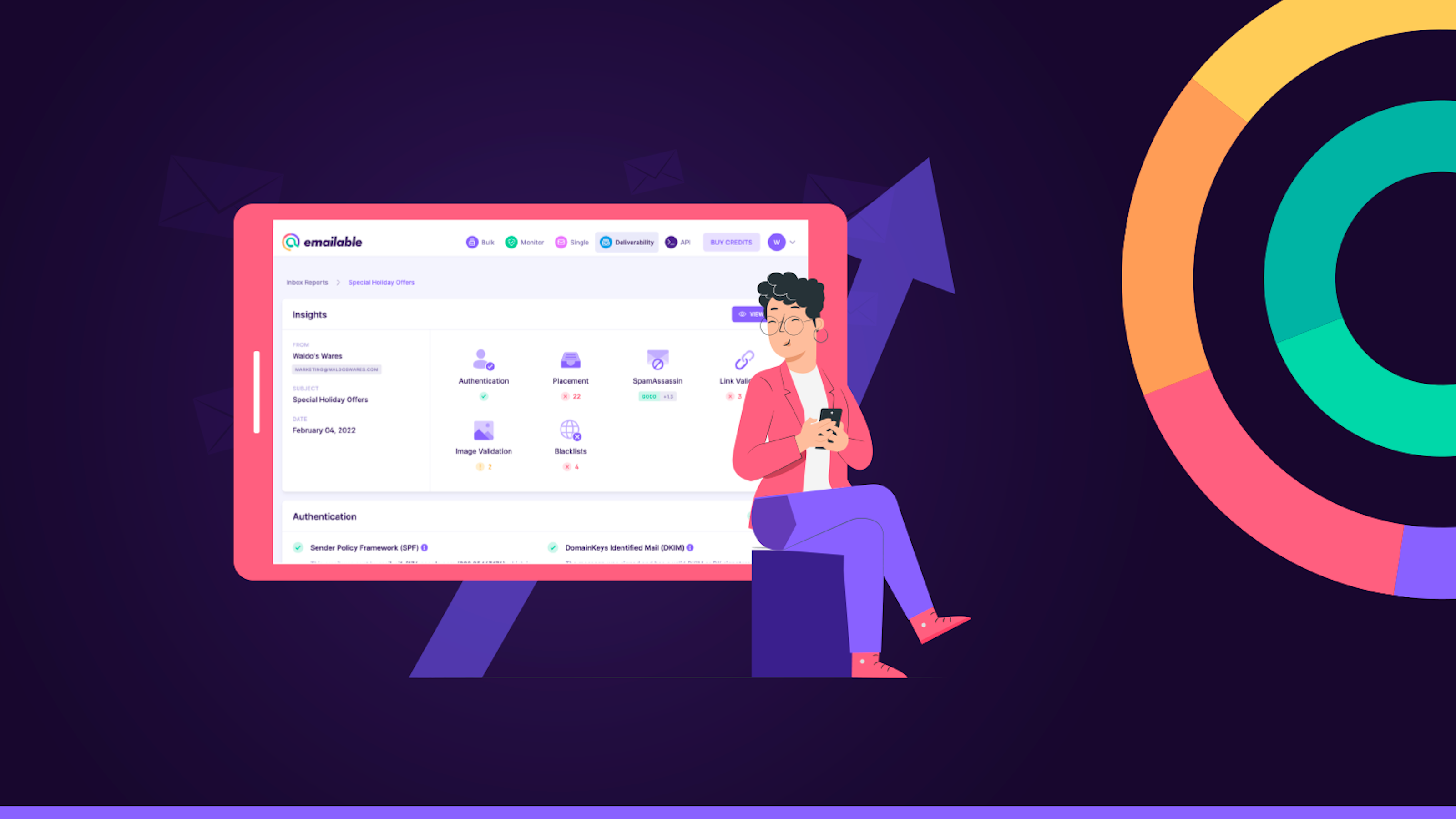
From Views to Revenue: Monetizing Your Business Through Strategic Video Advertising
January 11, 2024
Understanding the Role of SEO in Lead Generation
January 16, 2024A. Setting the Stage
In the dynamic realm of digital marketing, where strategies evolve at the speed of light, email marketing remains an enduring force. As we embark on this journey to explore effective email marketing techniques for lead generation, it’s essential to set the stage by understanding the pivotal role emails play in today’s business landscape.
1. Understanding the Importance of Email Marketing
In the cacophony of social media, search engine optimization, and other digital channels, email marketing stands as a reliable cornerstone. Its importance lies in its direct and personalized communication, offering businesses a direct line to their audience’s inbox. Email marketing isn’t just about broadcasting messages; it’s about creating meaningful connections, nurturing leads, and driving conversions.
2. The Evolution of Email as a Marketing Tool
The humble email has transformed from a simple text-based correspondence tool to a dynamic marketing powerhouse. Visual elements, interactive features, and multimedia content have elevated emails beyond mere conveyors of information. This evolution reflects the adaptability of email marketing, proving its resilience in the face of changing consumer preferences and technological advancements.
3. Significance of Lead Generation in the Digital Era
Lead generation is the heartbeat of contemporary marketing strategies. In an era where customer acquisition costs are soaring, effective lead generation becomes paramount. Email marketing, with its ability to build relationships over time, plays a crucial role in converting leads into loyal customers. Understanding this significance sets the stage for unraveling the intricate techniques that make email marketing a lead generation juggernaut.

Crafting Irresistible Email Campaigns
A. Compelling Subject Lines
Crafting an email subject line is akin to composing a captivating headline for a blockbuster movie – it’s the make-or-break moment. Let’s delve into the art of creating subject lines that not only grab attention but also entice the recipient to open and engage with the email.
1. Unleashing the Power of the First Impression
The first few words of your email are the gateway to engagement. A compelling subject line should be concise, intriguing, and evoke curiosity. It’s the digital equivalent of a firm handshake or a warm greeting, setting the tone for the entire interaction. Incorporating power words, emojis, or even a touch of humor can be the secret sauce that compels recipients to take that crucial first step – clicking to open.
2. The Art of Crafting Click-worthy Subject Lines
Crafting click-worthy subject lines involves understanding your audience’s pain points, desires, and interests. A/B testing different approaches can unveil the preferences of your specific audience. Real-life examples, such as “Unlock Exclusive Discounts – Today Only!” or “Behind the Scenes: Your VIP Pass to Insider Knowledge,” showcase how effective subject lines can spark curiosity and drive engagement.
3. Real-life Examples: Subject Lines that Convert
HTML bullet points allow us to present real-life examples in a visually appealing manner:
“Flash Sale Extravaganza”
- Limited-time offers create a sense of urgency.
“Your Wishlist, Our Gift”
- Personalization by referencing the recipient’s wishlist.
“Breaking News: Exclusive Access Inside”
- Leveraging curiosity and exclusivity.
B. Captivating Email Content
Crafting compelling email content is an art that combines psychology, storytelling, and visual elements. Let’s dissect the components that make email content not just informative but genuinely captivating.
1. The Science Behind Engaging Copy
Engaging copy goes beyond catchy phrases; it’s about understanding the psychology of your audience. Knowing their pain points, desires, and motivations allows you to tailor your message in a way that resonates. Utilize the power of storytelling, addressing challenges and presenting your product or service as the solution. The human brain is wired to respond to narratives, making your email more memorable and emotionally impactful.
2. Leveraging Storytelling for Emotional Connection
Humans crave connection, even in the digital realm. Storytelling transcends mere communication; it creates an emotional bond between your brand and the recipient. Whether it’s narrating a customer success story or sharing the journey of your business, storytelling adds a personal touch to your emails. HTML elements, such as embedded videos or visually appealing graphics, enhance the storytelling experience, making your content more engaging.
3. HTML Elements for Visual Appeal
In the world of email marketing, visuals speak louder than words. HTML elements like eye-catching images, GIFs, and interactive elements elevate your email from a textual monologue to a visually stimulating experience. Consider incorporating product showcases, infographics, or even user-generated content to break the monotony of text. Visual appeal not only captures attention but also enhances the overall user experience.
C. Personalization Strategies
In an era where consumers are bombarded with generic content, personalization emerges as the secret sauce for standing out in crowded inboxes. Let’s explore strategies that go beyond addressing recipients by their first name, creating tailored experiences that resonate on a deeper level.
1. Dynamic Content for Tailored Experiences
Dynamic content adapts to the unique preferences and behaviors of each recipient. Whether it’s showcasing personalized product recommendations or tailoring content based on past interactions, dynamic content adds a layer of relevance that generic emails lack. HTML elements, such as dynamically generated product carousels or personalized greetings, bring an interactive and personalized touch to your emails.
2. Segmentation: The Key to Personalized Outreach
Audience segmentation involves categorizing your subscribers based on specific criteria, allowing you to tailor your content to distinct groups. Understanding the dynamics of segmentation involves analyzing demographics, behavior, and engagement patterns. By sending targeted messages to specific segments, you ensure that your emails resonate with the unique needs and interests of each group.
3. Humanizing Automated Messages
Automation doesn’t mean sacrificing the human touch. Humanizing automated messages involves crafting emails that feel personal and authentic, even when sent at scale. Utilize conversational language, avoid overly formal tones, and inject a touch of personality into your automated responses. HTML elements, such as responsive and visually appealing templates, maintain a professional yet approachable aesthetic.
D. Call-to-Action Mastery
A compelling call-to-action (CTA) is the linchpin of any successful email campaign. It’s the moment when a passive recipient transforms into an engaged participant. Let’s explore the intricacies of creating CTAs that prompt action and drive conversions.
1. Creating Compelling CTAs that Drive Action
The language of your CTA should be clear, concise, and action-oriented. Whether it’s urging recipients to “Shop Now,” “Subscribe Today,” or “Unlock Your Exclusive Offer,” the CTA should leave no room for ambiguity. Utilize power words that evoke a sense of urgency or exclusivity, prompting the recipient to act promptly.
2. Strategic Placement for Maximum Impact
The placement of your CTA within the email is as crucial as its wording. Whether positioned prominently at the beginning or strategically placed after delivering value, the CTA should seamlessly guide the recipient toward the desired action. A/B testing different placements can unveil insights into your audience’s behavior and preferences.
3. Optimizing CTAs through A/B Testing
A/B testing involves experimenting with variations of your CTA to identify the most effective combination. Test different wording, colors, sizes, and even the surrounding content to determine what resonates best with your audience. Through iterative optimization based on A/B test results, you can fine-tune your CTAs for maximum impact and conversion rates.

Building and Nurturing a Robust Email List
A. Ethical List Building Practices
The foundation of an effective email marketing strategy rests on the quality of your email list. Let’s explore ethical practices that not only attract genuine subscribers but also lay the groundwork for lasting relationships.
1. Opt-in Strategies for Genuine Subscribers
Building a robust email list starts with obtaining explicit consent from subscribers. Opt-in strategies, such as double opt-ins, where users confirm their subscription, ensure that your list is comprised of individuals genuinely interested in your content. HTML elements like visually appealing subscription forms or pop-ups can enhance the user experience, making the opt-in process seamless and engaging.
2. Avoiding Spam Traps and Pitfalls
Navigating the labyrinth of spam filters and avoiding pitfalls is crucial for maintaining a healthy email list. Implementing authentication protocols like DKIM and SPF, regularly cleaning inactive subscribers, and steering clear of purchased email lists are vital steps. HTML elements, such as transparent unsubscribe options and clear privacy policies, add a layer of transparency, fostering trust with your subscribers.
3. Subscriber Retention: Quality Over Quantity
While expanding your email list is essential, retaining quality subscribers is equally crucial. Engage with your audience through valuable content, exclusive offers, and personalized communication. HTML bullet points can highlight strategies like offering subscriber-only discounts, early access to content, or participation in exclusive events, creating a sense of belonging and value.
B. Segmentation for Precision
Audience segmentation is the compass that guides your email campaigns toward precision and relevance. Let’s delve into the dynamics of segmentation and how tailoring content based on insights can elevate your email marketing game.
1. Understanding the Dynamics of Audience Segmentation
Segmentation involves dividing your audience into distinct groups based on criteria such as demographics, behaviors, or preferences. Understanding these dynamics allows you to send targeted messages that resonate with each segment. HTML elements can visually represent the segmentation process, showcasing how diverse audience categories contribute to a more personalized approach.
2. Tailoring Content Based on Segmentation Insights
Once segmented, the challenge lies in tailoring content that speaks directly to the unique needs of each group. Whether it’s customizing product recommendations, delivering industry-specific insights, or acknowledging geographical preferences, segmentation insights empower you to create content that feels tailor-made for each segment. HTML elements, such as visually appealing infographics or personalized banners, enhance the visual appeal of your segmented campaigns.
3. Achieving Personalization at Scale
Scaling personalization involves leveraging automation tools to deliver personalized content efficiently. Dynamic content, adaptive emails, and AI-driven personalization contribute to achieving personalization at scale. HTML elements like responsive templates ensure that personalized content renders seamlessly across various devices, creating a consistent and personalized user experience.
C. Continuous List Maintenance
Building an email list is a dynamic process that requires continuous maintenance. Let’s explore strategies for regularly cleaning and updating your email list to ensure optimal deliverability and engagement.
1. Regularly Cleaning and Updating Email Lists
Regular list cleaning involves removing inactive or bounced email addresses, ensuring that your list remains populated with engaged subscribers. HTML elements, such as visually appealing unsubscribe options or re-engagement campaigns, can streamline the process while maintaining a positive user experience. Implementing a re-engagement strategy through HTML-based surveys or exclusive offers can also revive interest among inactive subscribers.
2. Strategies for Handling Inactive Subscribers
Understanding the reasons behind subscriber inactivity is crucial for devising effective re-engagement strategies. HTML-based surveys or feedback forms can provide valuable insights into subscriber preferences and dissatisfaction. Implementing win-back campaigns with visually appealing content or exclusive incentives can rekindle interest and bring inactive subscribers back into the fold.
3. The Role of GDPR Compliance in List Management
With the increasing focus on data privacy, GDPR compliance is non-negotiable in email list management. Clearly communicating your data usage policies through HTML elements like privacy banners or detailed consent forms ensures transparency. Regularly updating subscribers on privacy policies and providing easy opt-out options contribute to a positive and compliant user experience.

Leveraging Automation for Efficiency
A. Email Drip Campaigns
Email drip campaigns are the unsung heroes of automated marketing, orchestrating a series of messages that guide subscribers through a predefined journey. Let’s uncover the intricacies of mapping customer journeys, timing considerations, and balancing automation with personalized touchpoints.
1. Mapping Customer Journeys for Drip Sequences
A successful drip campaign begins with a well-defined map of the customer journey. Understanding the stages your audience goes through, from awareness to conversion, allows you to craft a sequence of emails that nurtures leads effectively. HTML elements like flowcharts or visual representations can elucidate how drip sequences align with the customer’s decision-making process.
2. Timing and Frequency Considerations
Timing is everything in email marketing, especially in drip campaigns. Analyzing data to determine the optimal times for sending emails ensures your messages hit the inbox when your audience is most receptive. HTML-based interactive timelines or scheduling visualizations can illustrate the strategic timing and frequency considerations that optimize engagement without overwhelming subscribers.
3. Balancing Automation with Personalization
While automation streamlines processes, injecting a touch of personalization is crucial for retaining the human element. Drip campaigns should feel tailored to individual needs and behaviors. HTML elements, such as personalized dynamic content or visually appealing email templates, strike the delicate balance between efficiency and personal connection.
B. AI Integration for Smart Campaigns
Artificial Intelligence (AI) isn’t just a buzzword; it’s a game-changer in email marketing. Let’s explore how harnessing AI for predictive analytics, AI-driven personalization, and utilizing tools and platforms can elevate your campaigns to a new level of sophistication.
1. Harnessing Artificial Intelligence for Predictive Analytics
Predictive analytics powered by AI goes beyond traditional data analysis. By predicting future behaviors and trends, AI empowers marketers to anticipate the needs of their audience. HTML visualizations, such as predictive trend graphs or dynamic charts, can illustrate how AI algorithms analyze data to make accurate predictions, allowing marketers to stay one step ahead.
2. AI-driven Personalization in Email Marketing
AI-driven personalization takes personalization to a whole new level. By analyzing vast amounts of data, AI can dynamically adjust content, subject lines, and even sending times based on individual preferences. HTML elements, such as interactive personalization demos, showcase how AI can tailor emails in real-time, creating a hyper-personalized experience for each recipient.
3. Tools and Platforms for AI-powered Campaigns
The market is flooded with tools and platforms that harness AI for email marketing. From predictive analytics tools to platforms offering AI-driven content generation, understanding and selecting the right tools is essential. HTML-based feature comparisons or interactive tool showcases can guide marketers in choosing the AI solutions that align with their specific needs.
C. Analyzing Metrics for Optimization
The power of email marketing lies in its measurability. Let’s dive into the key metrics that offer insights into your campaign performance, iterative optimization based on analytics, and utilizing feedback loops for continuous improvement.
1. Key Metrics for Evaluating Email Campaign Performance
Understanding metrics like open rates, click-through rates, and conversion rates is essential for gauging the success of your email campaigns. Visual representations, such as HTML-based dashboards or interactive graphs, provide a comprehensive overview of these key metrics at a glance.
2. Iterative Optimization Based on Analytics
Data-driven decision-making is at the core of email marketing optimization. By continuously analyzing metrics, marketers can identify patterns, trends, and areas for improvement. HTML-based A/B testing visualizations or heatmaps showcasing user interactions can guide marketers in iteratively optimizing their campaigns for better performance.
3. Using Feedback Loops for Continuous Improvement
Feedback loops involve actively seeking and incorporating feedback from subscribers. Surveys, polls, and direct communication channels are HTML elements that can facilitate this process. By understanding subscriber preferences and pain points, marketers can fine-tune their strategies, ensuring that each campaign is a step closer to perfection.
![24 Tips on How to Avoid Email Spam Filters [+Checklist] | Loopify Blog](https://www.loopify.com/blog/wp-content/uploads/2020/11/spam-filters-social.png)
Overcoming Common Email Marketing Challenges
A. Deliverability Concerns
Email deliverability is the linchpin of successful email marketing. Navigating through spam filters, improving sender reputation, and understanding the intricacies of email deliverability are paramount for ensuring your messages land in the coveted inbox.
1. Strategies to Avoid Spam Filters
Spam filters are the gatekeepers of the inbox, and understanding how to avoid triggering them is essential. Employing strategies such as using a consistent sender name and email address, crafting relevant and non-deceptive subject lines, and avoiding excessive use of capital letters or exclamation marks can enhance deliverability. HTML elements, like visual representations of spam filter criteria, provide a clear roadmap for steering clear of potential pitfalls.
2. Improving Sender Reputation
Your sender reputation is the trust currency with internet service providers (ISPs). Practices such as maintaining a clean email list, encouraging subscriber engagement, and promptly addressing bounce-backs contribute to a positive sender reputation. HTML-based visualizations, like reputation score breakdowns, can help marketers understand the factors influencing their reputation and take proactive measures for improvement.
3. Navigating the Challenges of Email Deliverability
Email deliverability isn’t a one-time effort; it’s an ongoing commitment. HTML-based deliverability checklists or interactive guides can assist marketers in implementing best practices consistently. By monitoring deliverability metrics and actively addressing issues, marketers can ensure their emails consistently reach the intended recipients, maximizing the impact of their campaigns.
B. Keeping Content Relevant
In the ever-evolving landscape of digital marketing, keeping your email content relevant is a perpetual challenge. Let’s explore trends and innovations, dynamic adaptation to changing consumer preferences, and real-life case studies exemplifying successful adaptation strategies.
1. Trends and Innovations in Email Content
Staying ahead in email marketing requires staying abreast of emerging trends and innovations. HTML elements, such as trend visualizations or interactive infographics, can showcase the evolution of email content. From interactive emails to gamification and embedded videos, understanding and incorporating these trends ensures your content remains fresh and engaging.
2. Dynamic Adaptation to Changing Consumer Preferences
Consumer preferences are a moving target, influenced by cultural shifts, technological advancements, and evolving expectations. HTML-based dynamic content demos or interactive preference surveys can illustrate how brands can adapt their email content to align with the changing preferences of their audience. Whether it’s embracing minimalistic design, incorporating user-generated content, or leveraging interactive elements, dynamic adaptation is the key to maintaining relevance.
C. Combatting Subscriber Fatigue
The delicate balance between staying top-of-mind and overwhelming subscribers is a constant battle. Recognizing and addressing over-marketing, timely and targeted communication, and balancing frequency with quality are essential strategies for preventing subscriber fatigue.
1. Recognizing and Addressing Over-Marketing
Over-marketing can lead to fatigue and, ultimately, disengagement. HTML-based visual representations, such as engagement trend graphs, can provide insights into when subscriber fatigue might be setting in. By recognizing patterns of declining engagement, marketers can adjust their strategies to maintain a healthy balance.
2. The Art of Timely and Targeted Communication
Timely communication involves sending messages when subscribers are most receptive. HTML elements, like scheduling visualizations or interactive calendars, can illustrate the importance of strategic timing. Targeted communication, on the other hand, entails tailoring content to specific segments. Case studies showcasing successful targeted campaigns can highlight the effectiveness of precision in communication.
3. Balancing Frequency with Quality
Balancing the frequency of emails with the quality of content is a tightrope walk. HTML-based content calendars or interactive frequency guides can assist marketers in finding the sweet spot. By understanding subscriber preferences and adjusting frequency based on engagement metrics, marketers can ensure their emails remain welcomed rather than intrusive.
Embracing Change: Future Trends in Email Marketing
A. Evolution of Email Marketing Technologies
The landscape of email marketing is in perpetual motion, with technologies evolving at a rapid pace. Let’s explore the imminent trends and innovations shaping the future of email marketing, from AI-driven advancements to interactive content and beyond.
1. AI-Powered Hyper-Personalization
The integration of AI is set to revolutionize email marketing, pushing the boundaries of personalization even further. AI algorithms will analyze user behavior, preferences, and interactions to dynamically adjust content in real-time. HTML-based visuals, such as AI-powered personalization demos, can illustrate how emails will become increasingly tailored to individual recipients, creating a hyper-personalized user experience.
2. Interactive Content as the Norm
Interactive content is not just a fleeting trend; it’s becoming the new norm in email marketing. HTML elements, like interactive content showcases or user engagement heatmaps, can demonstrate the impact of incorporating quizzes, polls, and interactive elements directly within emails. This immersive approach not only captivates audiences but also provides valuable insights into user preferences.
3. Rise of Predictive Analytics
The predictive power of analytics will play a pivotal role in shaping email marketing strategies. HTML-based visualizations, such as predictive trend graphs or interactive analytics dashboards, can showcase how predictive analytics algorithms analyze vast datasets to forecast future behaviors and trends. Marketers armed with predictive insights can proactively tailor their campaigns, staying ahead in the dynamic landscape.
B. Emphasis on Accessibility and Inclusivity
As digital spaces become more diverse, ensuring accessibility and inclusivity in email marketing is not just a choice but a necessity. HTML elements, like accessible email design guides or interactive inclusivity checklists, can provide insights into how marketers can create emails that cater to diverse audiences, including those with disabilities.
1. Inclusive Email Design Best Practices
Inclusive design involves creating content that can be accessed and understood by everyone, regardless of abilities or disabilities. HTML visuals, such as inclusive design checklists or interactive guides, can highlight best practices, such as using descriptive alt text for images, ensuring readable font sizes, and providing clear calls-to-action, making emails accessible to a wider audience.
2. Leveraging Technology for Accessibility
Advancements in technology offer tools and features that enhance accessibility. HTML elements, such as technology integration showcases or interactive accessibility tool demonstrations, can illustrate how marketers can leverage features like screen reader compatibility, voice commands, and adaptable layouts to ensure a seamless experience for all users.
3. Ethical Data Usage and Privacy Compliance
With increasing concerns about data privacy, ethical data usage is paramount. HTML-based visualizations, such as privacy policy banners or interactive consent forms, can illustrate how marketers can communicate transparently about data usage. Emphasizing privacy compliance through adherence to regulations like GDPR ensures not only legal compliance but also builds trust with subscribers.
C. Integration of Augmented Reality (AR) in Email Marketing
As technology continues to advance, the integration of augmented reality (AR) is poised to revolutionize email marketing. HTML elements, such as AR experience previews or interactive AR showcases, can offer glimpses into how marketers can create immersive experiences within emails. From virtual product try-ons to interactive 3D elements, AR opens new possibilities for engaging and captivating audiences.
1. Virtual Product Try-ons and Demonstrations
Imagine receiving an email that allows you to virtually try on a pair of sunglasses or explore the features of a new gadget. AR enables marketers to create immersive experiences within emails, enhancing the customer journey and providing a preview of products or services. HTML elements, such as AR experience demos or interactive product showcases, can illustrate the potential impact of virtual try-ons and demonstrations.
2. Interactive 3D Elements for Enhanced Engagement
Static images are giving way to interactive 3D elements that allow users to explore products from different angles. HTML-based visuals, such as 3D product renderings or interactive demos, can showcase how incorporating interactive 3D elements adds a layer of engagement and interactivity to email content. This evolution in visual representation elevates the overall user experience, making emails more captivating and memorable.



